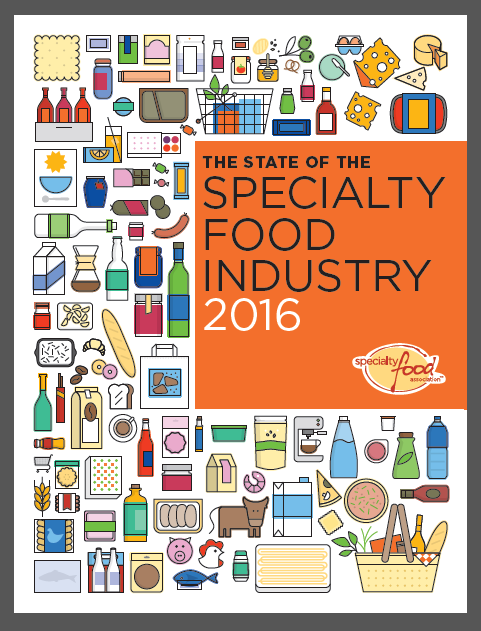Specialty food sales hit $120.5 billion in the U.S. in 2015, according to this year’s State
of the Specialty Food Industry report, produced by the Specialty Food Association
and Mintel.
 Here are some takeaways:
Here are some takeaways:
1. Though mainstream retailers account for the largest share of specialty food sales,
they are growing at an almost equal rate as specialty food and natural food stores.
According to supply chain data, sales potential may be biggest in natural stores.
2. Specialty food sales through food service are growing faster than retail sales: 27
percent versus 19.7 percent. More U.S. consumers are dining out and seeking
high-quality, flavorful foods when doing so.
3. Fifty-eight out of 61 specialty food categories enjoyed double-digit sales growth in
2015, and two categories grew by more than 200 percent. Fresh, protein, and
convenience are three trends holding steady as evidenced in the specialty food
categories showing the most sales growth: refrigerated RTD tea and coffee; eggs;
jerky and other meat snacks; refrigerated pasta; and water.
4. The supply chain has embraced the importance of e-commerce as a way to sell
directly to consumers. Eighty-five percent of manufacturers sell via their own
website and 49 percent use a third-party platform like Amazon. Importers cite
online sales as one of their fastest-growing channels.
5. Manufacturers say retail sales—whether through distributors or direct—are their
biggest and fastest-growing sales channel. However, they are enjoying success via
the food service market as well, with an almost equal amount of sales coming from
products made exclusively for food service as products also sold to retail.
6. Many in the supply chain believe non-GMO will be a product claim of growing
importance to consumers. Forty-nine percent of manufacturers plan to introduce
products that are non-GMO in 2016.
7. Local products are still an important way retailers differentiate their offerings.
The following pages cover more highlights of key data from the research.
A summary version with charts and more data is available for download at
specialty food.com/stateindustry2016, along with definitions and brand
examples for the 61 specialty food categories used in this report.




